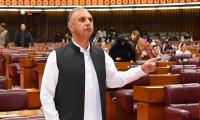The CEO of K-Electric has squarely blamed the federal government for prolonged power outages in Karachi. According to him, the federal government has failed to provide KE with the required quantity of oil and gas. He has also accused the federal government of not allowing KE to install the projects that were approved in 2016. These revelations came on the floor of a public hearing conducted by the power regulator – the National Electric Power Regulatory Authority (Nepra) in Karachi. Moreover, the CEO also excused himself by saying that it was not possible for KE to end loadshedding. Now it has become clear that in addition to K-Electric’s incompetence to handle the power crisis in Karachi, a major reason is inadequate and interrupted fuel supply for power generation. Nepra has realized the severity of this issue and how it is affecting businesses, industries, and domestic users who contribute the largest chunk of taxes to the national exchequer. Now, CNG stations across Sindh will remain closed for 48 hours as the Sui Southern Gas Company Limited (SSGC) is going to increase its gas supply to K-Electric.
Pakistan’s largest city has been in the throes of a complete breakdown in its electricity management. Apart from testing people’s patience, the power crisis is hampering industrial production, and increasing the cost of running businesses as they are forced to switch to their own power generation with generators mostly run on fossil fuels. After this public hearing, one may expect some improvement in this matter. The SSGC will now be supplying an additional 40mmcfd to K-Electric. With this increased supply of gas, KE will not have any excuse for repeated power outages that it has been inflicting on the denizens of Karachi. KE has been complaining about fuel adjustment for the increased hours of loadshedding throughout Karachi. Though the Sindh Association of Trade and Industry and All Pakistan CNG Association are not happy at this decision, at least for the time being the agony of the people in Karachi will slightly be mitigated. The two associations are suggesting that power plants be run on furnace oil instead of gas. All three major industrial areas – in Korangi, North Karachi, and Sindh Industrial and Trading Estate (Site) – have been badly affected by power shortages.
The Kanupp power plant has also suspended its supply to Karachi since the beginning of July and IPPs are also supplying less power to the city. The power crisis in Karachi is not an isolated problem of a city, rather it is a reflection of how we have been managing our country and society for decades. It was over 30 years ago when the first Benazir government could foresee the power crisis coming. Her government signed multiple MoUs with international companies for power generation in the country. Those MoUs were revoked by the Nawaz Sharif government on charges of ‘expensive electricity’. Then a zigzag went on for ten years before General Musharraf mounted a coup and from 2000 to 2010 there was no major addition to power generation capacity of the country. During that period the decision to grant countless licences to open and run CNG stations across the country was disastrous as we burned in our vehicles the natural gas that should have been preserved for domestic and industrial uses. This is a long story, but even now if we don’t do some forward planning the power crisis is going to haunt us for long.
On Monday, SBP logged its deepest rate cut yet, slashing policy rate by 250 basis points to 15.0 per cent
AQI levels soar past 1,000 and peaking at staggering 1,194, making Lahore one of most polluted cities in world
Vague criteria and lack of checks effectively create a legal pathway for arbitrary detention
Nonetheless, the damage was done – anger and fear spread like wildfire, leaving behind a trail of unrest and loss
The fallout from this attack highlights a broader crisis that has persisted for far too long
Since June, the government had pre-qualified six groups to participate in the bidding







